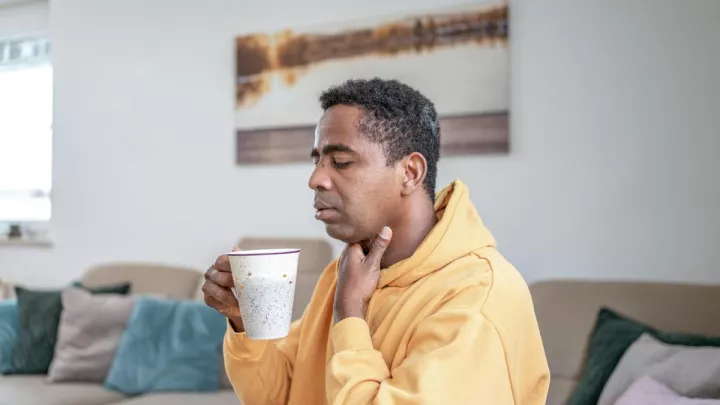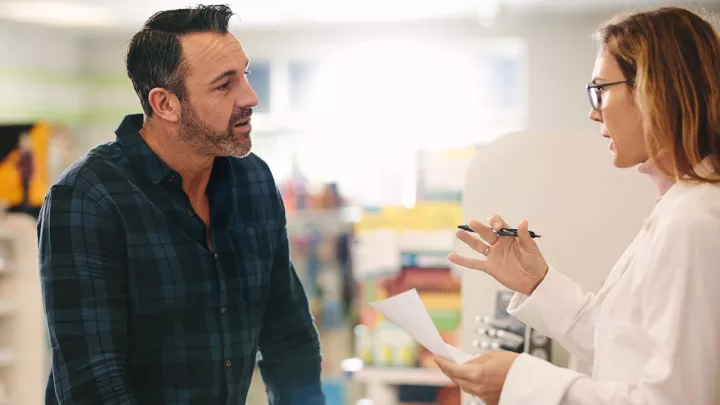You asked, we answered: What is antibiotic resistance?

Question:
I’ve heard about “superbugs” that can’t be stopped by antibiotics. But what does it mean when bacteria are resistant to antibiotics, and how does this happen?
Answered by primary care physician Daniel Brown, DO:
Antibiotic resistance is a growing concern. According to the Centers for Disease Control and Prevention’s 2019 Antibiotic Threats Report, about 35,000 people in the United States die every year from antibiotic-resistant bacterial infections. Resistance occurs when bacteria evolve and gain the ability to survive when exposed to antibiotics. These changes can make them resistant to future exposures to the same antibiotic. This can lead to infections that are harder to treat. Unfortunately, these mutant bacteria can be contagious. Antibiotics may also kill off beneficial bacteria, leaving behind already resistant strains, which can then replicate and spread with less competition.
Antibiotic resistance is a relevant topic to all of us, because we all get sick from time to time. Knowing a few things about bacteria, infections, and how to appropriately take antibiotics can help.
The role of overuse and misuse
Even when we are healthy, we have bacteria on our skin, digestive system, and urinary tract (some good and some bad). When a person is given an antibiotic they don’t need – like antibiotics prescribed for the common cold virus, it can unnecessarily clear out good bacteria, leaving drug-resistant bad bacteria to replicate to form entire colonies. Some of these bacteria also mutate “learning” to evade future rounds of that antibiotic.
Stopping antibiotics too soon or using short courses of “leftover” antibiotics at home can also contribute to the growth of drug-resistant bacteria.
Consequences for individual and public health
Bacteria that are resistant to antibiotics can pass from one person to another. This leads to communities of people who collectively resist some antibiotics. On an individual level, more antibiotics used now could mean fewer options that work effectively later.
Virus or bacteria?
Health care providers look for clues to determine whether an infection is viral or bacterial. Sometimes, a test such as a swab, X-ray, or lab can help in the decision, but most of the time, the best answer is formulated with a good history and physical exam. This is why most providers ask patients to be seen in person before prescribing an antibiotic.
Viruses and bacteria can cause similar symptoms but have different disease patterns. Your provider can usually tell them apart by asking the right questions. For example, most bronchitis infections and upper respiratory infections are viral.
Working together toward responsible antibiotic use
Antibiotics can alleviate suffering and save lives when prescribed properly. As health care providers, we want to do the right thing for our patients. We don’t want to miss a bacterial infection, but we don’t want to over-prescribe or treat a virus with an antibiotic.
Patients want to feel free of their concerns being dismissed lightly. It can be hard to accept not getting an antibiotic when you feel sick. Even so, it can help to give grace to a provider who is trying to be a good, thoughtful steward.
Patients should continue to ask questions and expect a good explanation for why an antibiotic is or is not being recommended.
Providers can help by teaching as they treat and offering advice on how to cope with symptoms. Helping patients understand why a decision is being made can increase a patient's trust that they will recover without an antibiotic. If a clinic interaction has been compassionate and informative, I believe a patient will find it easier to endure the time it takes to heal.
Resistance to antibiotics is a serious health risk, but it can be reduced as patients partner with providers by using antibiotics wisely. Knowing how resistance happens, why it matters, and how to responsibly deal with infections can help keep these important drugs working for future generations.







